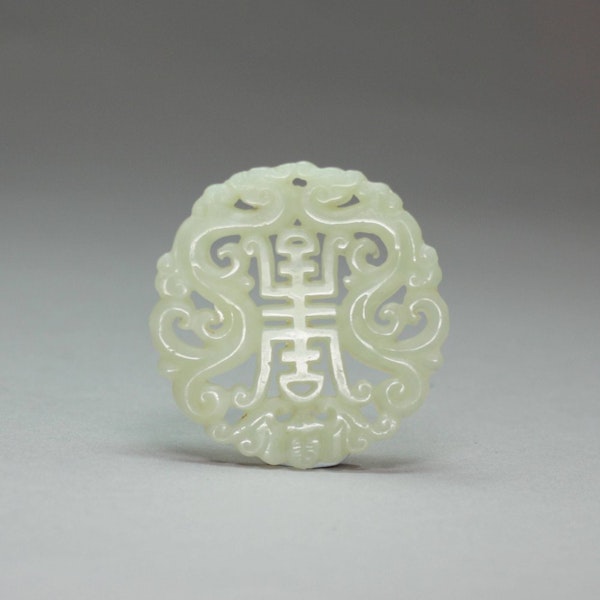Chinese bowenite carved pendant, 19th-early 20th century
Chinese bowenite carved pendant, 19th-early 20th century
POA
Description
Chinese bowenite carved pendant, 19th-early 20th century, in the form of the 'shou' character surrounded by stylised cloud scrolls.
Condition: Good
Notes: Bowenite is a variety of the serpentine species antigorite and classified as a semi-precious gemstone. Bowenite deposits in China are found in the Soochow region, which accounts for it also being called Soochow jade. Its green colour is caused by chromium and iron impurities within the mineral and its relative hardness makes it highly suitable for carving. While it is often compared with jade, the two minerals having different compositions: jade is primarily composed of jadeite or nephrite, while bowenite is a type of serpentine. The shou symbol is an ideograph representing longevity; one of the Five Blessings (wufu 五福), popular in ceramic, jewellery, textile and furniture design with or without other auspicious symbols of long life or prosperity such as bats or cash coins.
| item details | |
|---|---|
| Material and Technique | Carved bowenite |
| Origin | Chinese |
| Period | Other |
| Diameter | 5cm. (2in.) |
Product REF: R167


